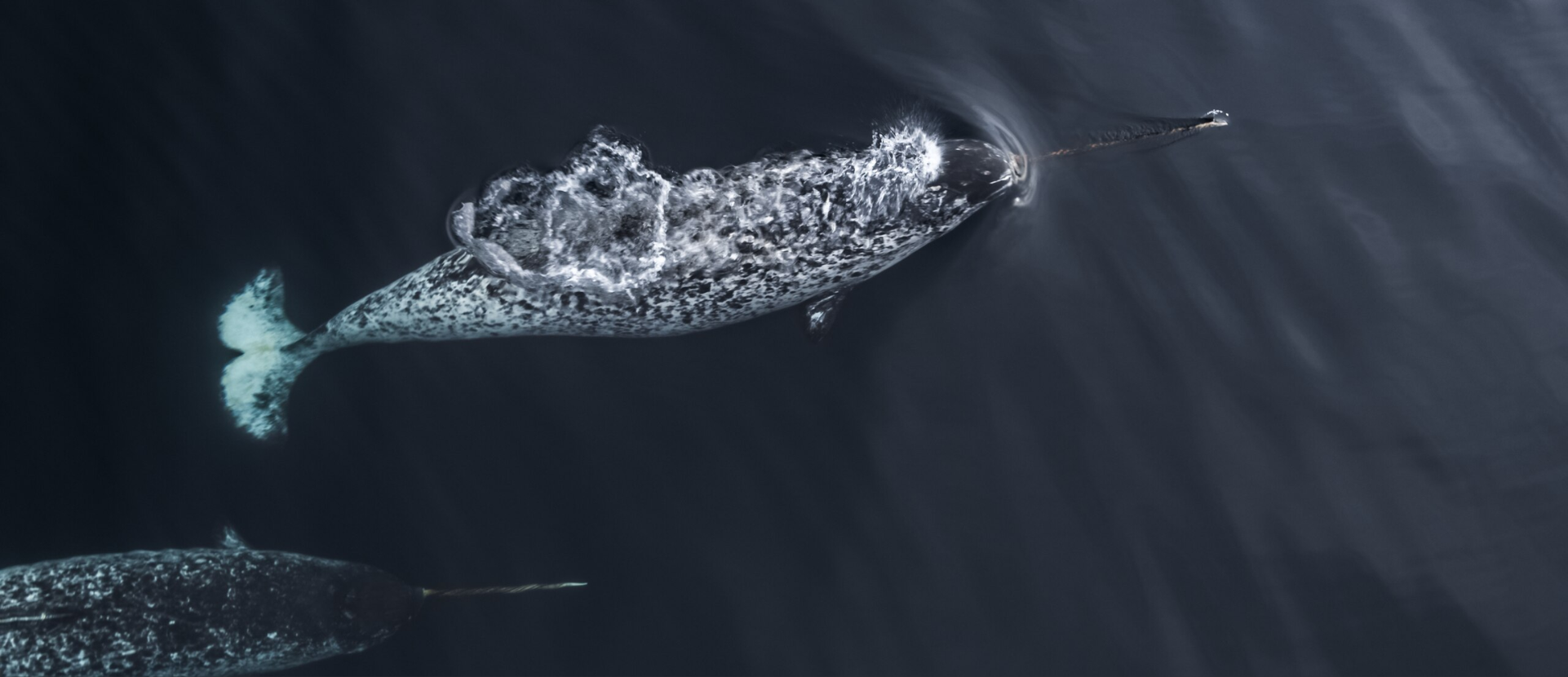- Marine Life Facts
- Science: Explained
Are hydrothermal vents the origin of life on Earth?

Thousands of metres down in the Galápagos Rift valley, a deep-sea camera is towed along the seafloor, capturing our first glimpse of an extraordinary and alien world.
Towering chimneys pumping out plumes of black smoke cover the seabed; these are hydrothermal vents.
Despite low oxygen levels, high toxicity and fluid temperatures of up to 350°C, hydrothermal vents host a remarkably diverse array of Ocean life.
These Ocean creatures are specially adapted to these extreme conditions: Giant tubeworms, beds of mussels and clams, fluffy crabs, pink vent fish and more.
The discovery of hydrothermal vents in 1976/ 1977 prompted a new branch of deep-sea biology. Since then more and more species have been discovered.
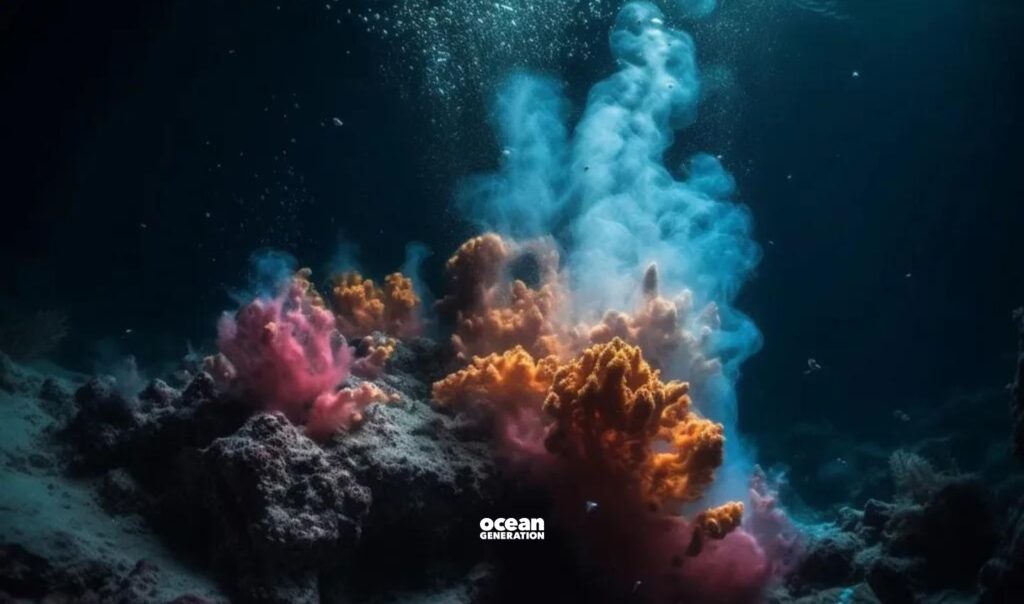
Where are hydrothermal vents found?
Hydrothermal vents were one of the first environments to have existed on Earth and have been bubbling away for over 4 billion years.
Hydrothermal vents can form anywhere a heat source meets a fluid system. They often occur on the seafloor at tectonic plate boundaries. The hot, upwelling magma heats up seawater which is ejected as mineral-rich plumes.
They are mostly found in the abyssal zone of the Ocean (3,000 – 6,000m). While the majority (65%) of the hydrothermal vents are located close to the tectonic plate boundaries, they are also common (12%) along chains of underwater volcanoes, called volcanic arcs.
In 2000, a new type of vent was discovered, located several kilometres from a divergent plate boundary (tectonic plates that are moving apart) called Lost City vents. They resemble the spires of an underwater metropolis like Atlantis.
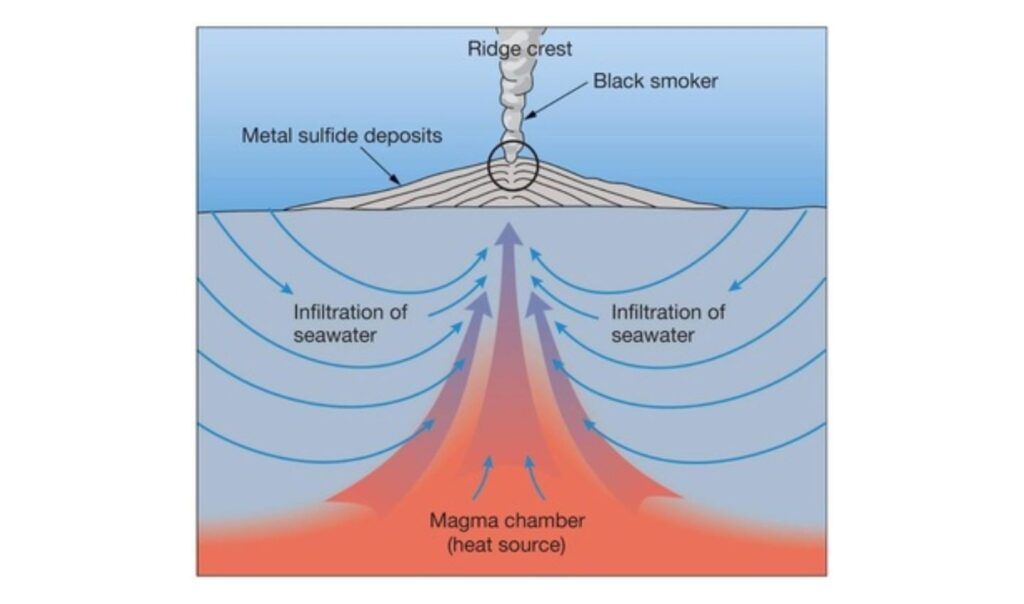
Take a look at some of the weird and wonderful Ocean life found in the deep-sea:
Annelid tubeworms (Riftia pachyptila)
Also called ‘giant tubeworms’, these are extremophiles, meaning they’re able to live in extreme environments, and can reach over 1.8 metres (six feet) tall.
They have a unique body plan with no mouth or anus and their lifestyle is unique, too as they rely entirely on symbiotic bacteria as a food source.
The Yeti Crab (Kiwa hirsuta)
This new family of crab was discovered in 2005 and has claws covered in dense setae (stiff bristles). They get almost all their food from the chemoautotrophic bacteria (bacteria that can turn inorganic chemicals into energy) that live in these bristly structures.
These furry crabs have been seen to wave their claws to help provide a flow of oxygen and minerals to their symbiotic bacteria.
Pompeii worm (Alvinella pompejana)
Named after the explosive eruption of Mount Vesuvius in Pompeii, the Pompeii worm is the most heat tolerant animal we know of. They can survive temperatures at high as 80°C. One physiological adaptation Pompeii worms have evolved to survive these extreme temperatures are heat shock proteins. These’re specific proteins which provide cells with thermal stability.
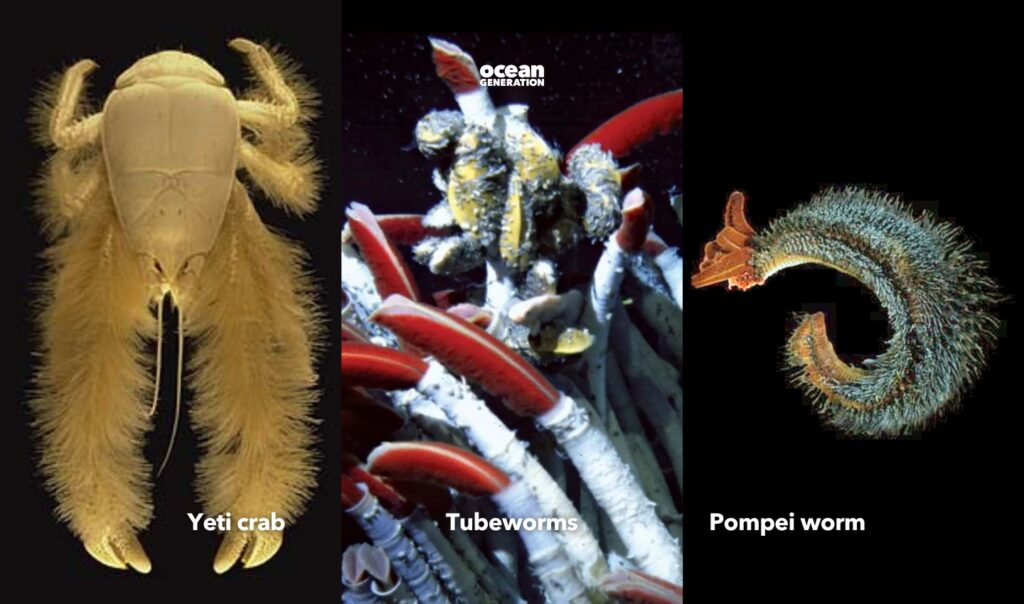
So how are these marine animals living in such extreme conditions?
Photosynthesis often gets all the credit for providing the energy that flows through food webs by converting light energy into food.
However, there is another lesser-known reaction. Chemosynthesis does the same thing but draws from chemical energy instead. This reaction is what supports the diverse communities we see at hydrothermal vents.
Could hydrothermal vents have sparked the origin of life on Earth?
Chemosynthetic bacteria found in these communities use the toxic hydrogen sulphide released by hydrothermal vents to convert carbon dioxide into organic carbon molecules.
These form the building blocks to all life on Earth.
It’s this nifty reaction that’s enabled deep-sea organisms to adapt and survive at hydrothermal vents.
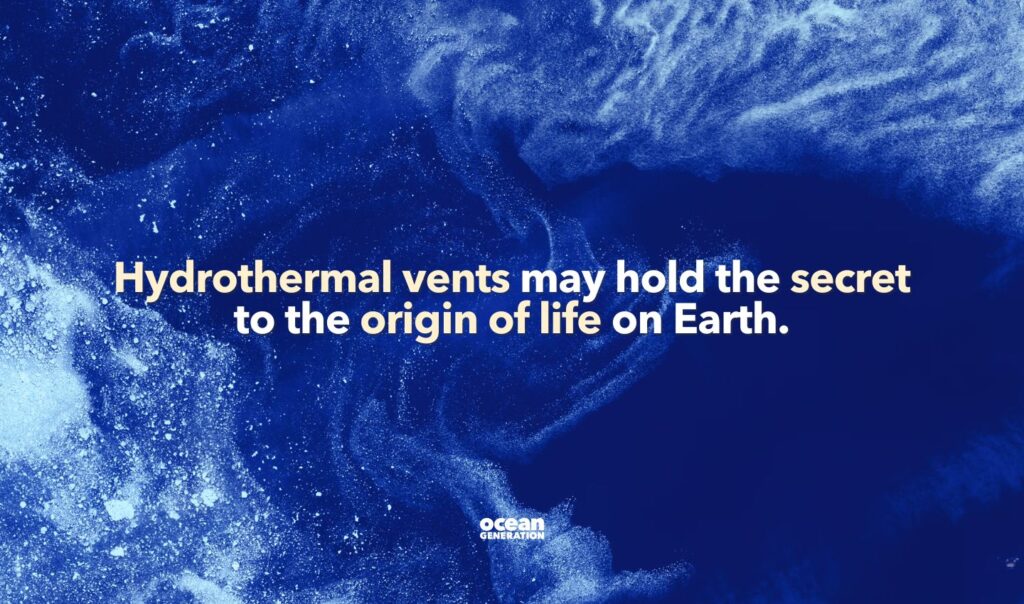
Animals living here have formed symbiotic relationships with these bacteria which can be incorporated into tissues (endosymbiosis) or on the animal surfaces (ectosymbiosis).
These chemosynthetic bacteria provide energy from the environment for their host. This can be so efficient that some creatures (such as the annelid tubeworm) don’t need to feed at all.
The discovery of these self-sufficient ecosystems cast new light on the origins of life on Earth. It was here that the unique conditions were suitable for a spontaneous metabolism (the spontaneous formation of molecules that are essential for all life) to occur.
This discovery gave rise to the question: Does the Ocean hold secret to the origin of life on Earth?
Theories on the origin of life range from lighting speeding up reactions to comets delivering organic molecules from outer space.
The ancient process of chemosynthesis precedes photosynthesis, and likely sustained the earliest life on Earth.
Bacteria were some of the first life forms to emerge. The most striking piece of evidence are the parallels between the chemistry spontaneously occurring at these vents and the core metabolic reactions found in these single-celled organisms.

Cyanobacteria are an ancient group of photosynthetic microbes which represent one of the earliest forms of life on Earth. With fossils dating back to 2000 – 3500 million years ago, these single-celled organisms evolved photosynthesis, allowing life to rise up from the darkness below.
The rest is history.
Since their discovery, hydrothermal vents have become the most popular theory among scientists for explaining the origins of life on Earth. Yet much remains to be discovered. Secrets still held within these mysterious ecosystems have the potential to revise our life-on-Earth theories once again.
Cover image via Research Feature.


